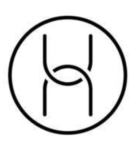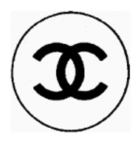Smartphones with a fragrance?
Recently, the European General Court ruled that a Huawei logo consisting of two horizontally interlocking C’s is not confusingly similar to the well-known Chanel logo.
In 2017 Huawei filed a European trademark application for the following logo.

The application was filed for mobile phones and various hardware and software goods.
Chanel believes that this represents a vertical version of its own trademark, and it filed a notice of opposition based on the following logo:

The French fashion house registered this logo not just for perfumes and clothing, but also for ‘computer hardware’. For that reason Chanel believes there is risk of confusion because the logos are alike and the goods are also similar.
However, Chanel lost out both before the Opposition Division and before the Boards of Appeal of the EU Intellectual Property Office. The opposition was rejected because the logos are not similar, and consequently there is no risk of confusion.
Chanel went to the General Court to challenge this ruling, invoking both article 8(1)(b) and article 8(5) of the EU Trade mark Regulation.
Article 8(1)(b) regulates ‘ordinary’ infringement. A trade mark cannot be registered if it is identical or similar to a prior trade mark and the goods are also identical or similar, which could lead to confusion among the general public.
According to article 8(5), a trade mark cannot be registered if it is identical or similar to a prior trade mark, irrespective of the goods or services for which it was registered. For this to apply, the prior mark must have a reputation and the use of the applicant’s mark for no valid reason would provide an unfair advantage over or be detrimental to the distinctiveness of the prior mark. A well-known trade mark therefore offers more options for enforcement than a regular trade mark.
Again, Chanel’s main argument was that the marks were alike, because rotating the Huawei logo by 90 degrees would result in a logo that is visually similar to Chanel’s.
Established case law teaches that in order to assess whether there is visual, phonetic, or conceptual similarity between two marks, the decision should be based on the overall impression of the trade marks, bearing in mind their distinctive and dominant characteristics. The General Court has confirmed that similarity between trade marks should be assessed on the basis of the originally filed instance of the trade mark. Any actual or merely hypothetical use of the registered trade marks in a different form (rotated by 90 degrees, for example), is irrelevant when comparing the marks.
Taking into account the above, the General Court ruled that there was no similarity between the Huawei logo and the Chanel trade mark. The appeal was rejected.
Chanel still has recourse to further appeal (limited to legal issues) against the decision of the European General Court. Perhaps this is not yet the end for this dispute.
Joop J. Elzas











